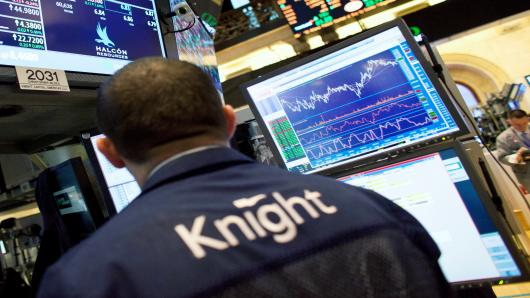What is going on with this market? The rally today is broad, with defensive names advancing at almost the same pace as cyclical names.
The S&P 500 gapped up about six points right at the open, and judging by discussions with traders it's fairly clear that a market-friendly interpretation of the FOMC minutes was the main culprit.
While there is plenty of talk about winding down purchases early, it's pretty clear the majority will want to see substantially better data before tapering off purchases: "Many participants emphasized that any decision to reduce the pace of purchases should reflect both an improvement in their overall outlook for labor market conditions, as implied by a wide range of available indicators, and their confidence in the sustainability of that improvement."
Bottom line: traders are betting that there is a lack of "confidence in the sustainability of that improvement" after that string of poor numbers last week, culminating in the Jobs Report. .
Is it safe for the Fed to continue buying? "[M]ost meeting participants thought the risks and costs of additional asset purchases remained manageable."
Is there more to come in this rally? Now that we have clearly broken through to new highs we seem to be entering a "parabolic" phase. This, as one trader noted to me this morning, is the most dangerous phase, but can be the most rewarding.
Elsewhere; the "mean reversion" trade: is it time for cyclicals? I have noted the underperformance of cyclicals vs. consumers in the past several weeks. That reversed yesterday on strong Chinese inflation numbers...for the first time in ages, commodity stocks had a great day; even copper was up two percent.
There's certainly room for rotation into cyclicals, but the problem with commodity stocks is simple: there's no pricing. Metal prices are under pressure because there's too much supply relative to China's more muted seven percent growth. Europe is not growing steel production, the U.S. is not, only China is growing.
Look around: aluminum is trading at or below marginal cost, iron ore is trading at marginal cost. What this means: the high cost producer ends up getting hurt the most.
So Rio Tinto (RIO), for example is bringing on iron ore production at $60 a ton...Cliffs Natural (CLF) cost is probably $110 to $120 a ton...iron ore is currently about $130 a ton. Guess who's getting killed? CLF has gone from nearly $75 a year ago to about $20 today.
So I am not going to fight a market melt-up, but anyone who looks at commodities cannot be impressed with the fundamentals: over-supply and lower demand.










